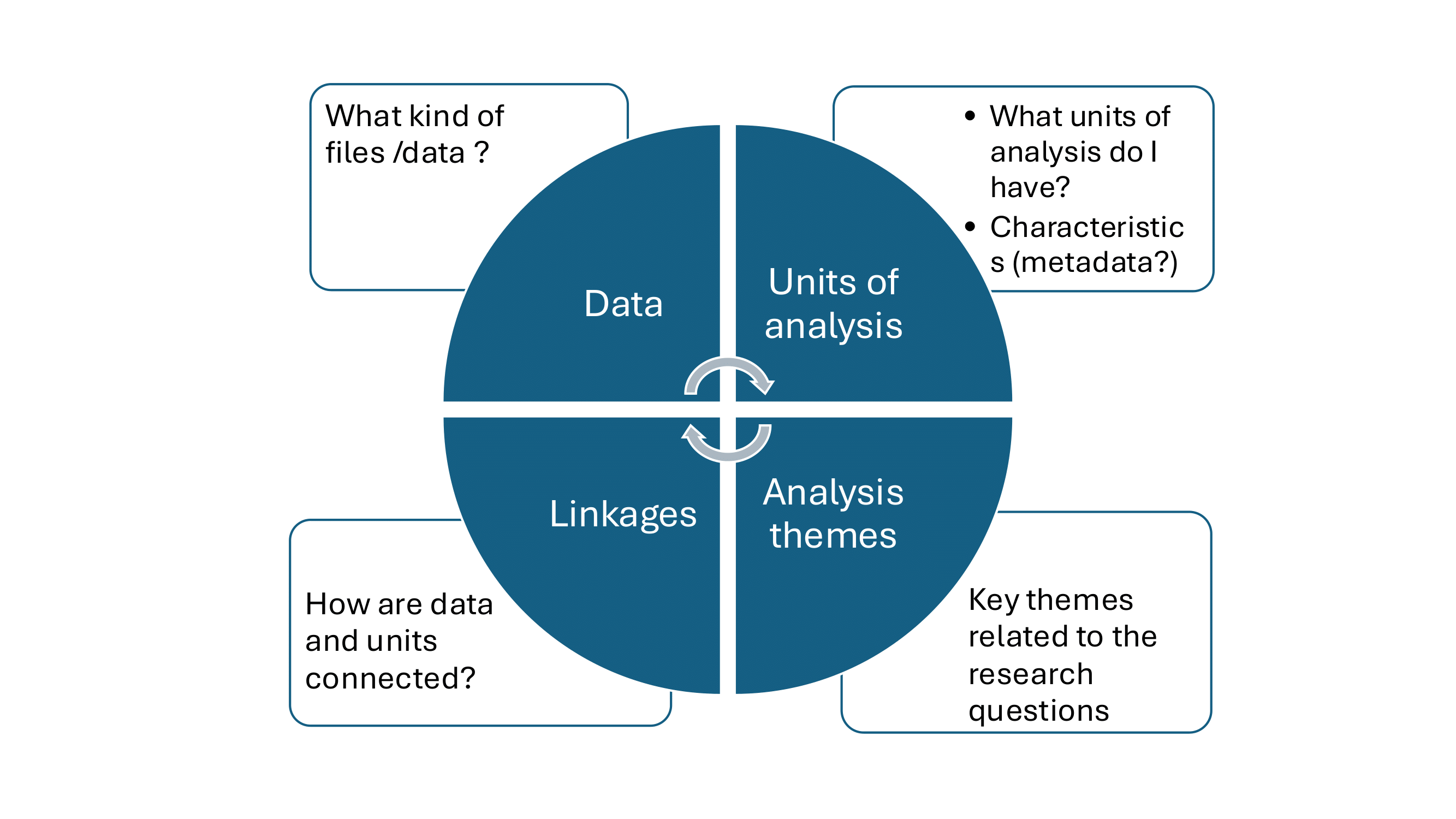Design your own Nvivo project: first steps
Before you start building your own Nvivo project,it’s a good idea to think through the components and likely structure in advance:
🤔 Ask yourself about the following:

What types of data and files do I have?
These need to be digitized, but could include text items like…
- transcripts of interviews/focus groups
- quantitative metadata
- field notes
- research tools
- policy documents
- literature
- archive materialsIt is also possible to include things like..
- photographs or images
- video/audio
- maps CAUTION: adding large files to Nvivo slows the software down dramatically.
For that reason we advise against using Nvivo for compiling many PDF articles, for example. Referencing software might be better for managing academic literature. The same goes for video/audio files.
It is helpful to imagine how these things are best organised in a file hierarchy.
What are the main units of analysis?
These could be individuals you’ve interviewed, organisations you’ve studied, communities you’ve worked in, etc. And you could have nested units at different levels (e.g. individuals nested in communities).
These units of analysis might later get created as ‘cases’ in the Nvivo project file, which enable you to keep information about that case all in one place.
For example, a case within a project file might represent an individual, with multiple linked interview transcripts, some fieldnotes, and some metadata telling of their demographics.
These cases and case structures can evolve as you conduct your research, too.
What are the characteristics of these units?
Now consider what characteristics of these units you have measured. For example, for individuals you have interviewed, you might have socioedemographic data recorded (e.g. age, sex, education) This would be known as metadata, and might be recorded in a spreadsheet or table.
What are the linkages within the project?
This might be files that are linked within a single case or individual, for example an individual who has 2 sequential interview transcripts. Or, it might be linkages between different individuals or cases who live in the same household.
What are likely to be key topics or themes?
This may be unknown at this stage, but you might imagine some key/core themes based on your research question such as ‘trust in institutions’, ‘sense of loss’, etc.
These themes might become ‘codes’ within your Nvivo project.

